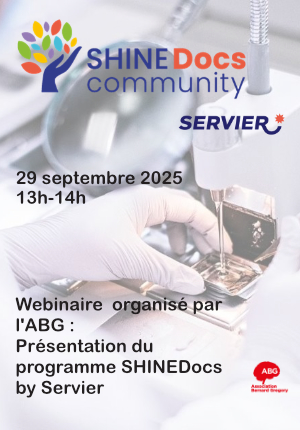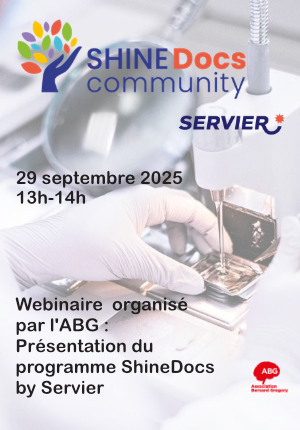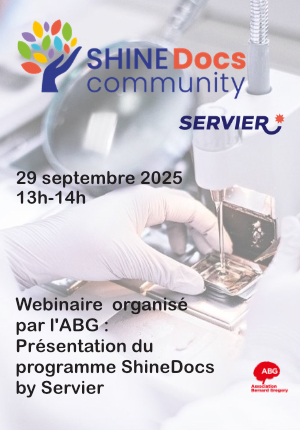PhD CIFRE NEWHEAT/MINES PARIS: AI-assisted control & optimisation of flexibility services provision of a Power-To-Heat installation with low-temperature thermal storage
| ABG-132973 | Sujet de Thèse | |
| 21/07/2025 | Cifre |

- Sciences de l’ingénieur
- Energie
- Mathématiques
Description du sujet
Title: "AI-assisted real-time control and optimisation of flexibility services provision of a Power-To-Heat installation integrating low-temperature thermal storage”
Context and background:
The European energy landscape is changing. On the generation side, the increased integration of renewable energies poses challenges for grid operators, who must constantly adjust the balance between generation and demand. In addition, the electrification of the transport, hydrogen production, and heating sectors is creating consumption peaks, particularly during cold winter periods.
Managing the highly variable generation and demand is critical to maintaining grid stability, and it relies on the ability to quickly mobilize flexible resources, including not only the modulation of production, but also demand-side management mechanisms. The solutions currently deployed to allow electricity to be stored and provided to the grid on demand (pumped hydro, battery storage, gas cogeneration solutions) will not be sufficient to meet the electricity grid's needs for flexibility because their development potential remains limited.
In this context, "Power-to-Heat" (P2H) coupled with heat storage has a role to play. P2H mature technologies consist of the use of electricity to produce heat, through electric boilers or heat pumps. The excess heat generated can be stored in heat storage tanks for later use, at a competitive cost and possibly over long periods of time, by heat consumers such as District Heating Networks or industrial sites. The latter represents an important lever for increasing the renewable share of heat consumption in Europe and decreasing CO2 emissions.
Several market mechanisms intervene to organize the contribution of the different actors to the flexibility of the system. The capacities that can be mobilized for real-time balancing management constitute "operational reserves" (FCR, aFRR, Balancing Market, …). The technical requirements for providing secondary reserve (aFRR) match to what an electric boiler can typically provide, the simplest and most robust component that converts electricity into heat. This gives the opportunity to explore the implementation of flexibility services in heat production and storage systems, to offer a reliable and efficient service to the electricity grid while ensuring controlled integration into a planned or operating thermal installation.
Low-temperature thermal storage, coupled with electric boilers and with advanced control solutions, could offer a technically and economically viable flexibility solution for the European electricity system. From the point of view of the power sector, these solutions could contribute to making it possible to achieve a higher penetration rate of non-dispatchable electrical RES in the European electricity mix. From the point of view of the district heating network, the integration of heat from the electricity network will make it possible to minimize the use of natural gas.
The P2H system studied in this thesis is connected to a solar thermal plant with a 1000 m3 storage tank already in operation, supplying heat to the Narbonne district heating network since 2021. It includes an electric boiler drawing cold water from the bottom of the storage tank and returning heated water to its top. This electric boiler will be commissioned by the end of 2025 to offer a frequency regulation service to the network operator. This plant is the first demonstrator of this kind of application in France, financed by the French Agency for Ecological Transition (ADEME).
Scientific objectives:
This work will thus focus on developing and testing optimal control strategies of the system, exploring both conventional methods and advanced AI-based approaches, to ensure the availability of the electric boiler for the flexibility service, while maximizing the supply of heat to the district heating network. These control strategies will integrate, not only forecasts of electricity prices and flexibility services, but also of heat production (through weather forecasts) and consumption (through heat demand modelling).
The aim of this thesis is to determine the optimal value at any given time of the auction price for which the P2H system agrees to be activated, based on the state of the system and the forecasts of heat demand, solar heat production and the price signal of the secondary reserve. This work will enable the implementation of stochastic optimization algorithms via a proof of concept, then will be evaluated in a simulation environment, and finally implemented and monitored in a real P2H installation.
Methodology and expected results:
Using a digital twin of the installation (detailed dynamic simulator of the hydraulic, thermal, electrical and control components of the system developed in Modelica language) provided by NEWHEAT, an optimization algorithm will be developed and tested to determine optimal trajectories for the operation of the P2H system to improve its performance in a digital simulation environment. This optimization will integrate several prediction models such as weather forecasts, aFRR frequency regulation market forecasts (activation periods and level of auctions) and forecasts of the heat demand of the district heating network. The algorithm will be based on model predictive control (MPC), real-time dynamic optimizations (DRTO) and advanced AI-based methods to provide the best combination of these methods. This prototype of real-time "auction price" optimizer will maximize the volume of heat supplied to the heating network and the gas load shedding, taking into account sale of solar heat, flexibility remuneration, maintenance costs and utilities necessary for the operation of the system.
After being tested and validated in a simulation environment, the optimization algorithm will be deployed by NEWHEAT into the existing NARBOSOL installation. This PhD thesis work will then continue with the monitoring of the behavior and performance of the optimizer-driven system. Finally, this data measured by the monitoring system will be processed and used to recalculate operating and performance indicators to perform a detailed comparative analysis of the system's operation with and without the optimization algorithm.
Prise de fonction :
Nature du financement
Précisions sur le financement
Présentation établissement et labo d'accueil
- MINES PARIS - PSL, Centre PERSEE
The PERSEE Center is one of the 18 research centers of MINES Paris. Its field of expertise concerns New Energy Technologies and Renewable Energy Sources (RES). Its research strategy is based on a "micro/macro" approach ranging from (nano)materials to energy systems. It is built around three structuring themes: i) materials and components for energy, ii) sustainable energy conversion and storage processes and technologies, and iii) renewable energies and smart energy systems.
This late is developped by one of the three groups of the Center, ERSEI, which stands for “Renewable Energies and Smart Energy Systems”. The ERSEI group develops methods and tools allowing the optimal integration of decentralized sources, including RES, storage devices, electric vehicles, active demand and other technologies, in energy systems and electricity markets. The research activity of the group is developped through three main axes. The first is based on the development of advanced short-term forecasting methods for different applications in power systems (i.e. forecasting of RES production, demand, dynamic line rating, market quantities, etc.). The second concerns the control and predictive management of energy systems. The aim is to design innovative approaches to optimise the operation (from real-time to days ahead) of different types of systems (smart-homes, microgrids, virtual power plants, energy communities, hybrid RES/storage plants, distribution grids multi-energy systems a.o.) considering uncertainties. The third axis concern planning and prospective studies that aim to optimise the design of future energy systems, generate furture scenarios, optimise investements etc.
The PERSEE Center is located within the scientific parc of Sophia-Antipolis, near the cities of Nice, Cannes and Antibes in the south of France. Its workforce is around 55 people.
- NEWHEAT
Newheat is a renewable and sustainable heat supplier. Since 2015, the company has been offering innovative decarbonization solutions for major heat consumers: industrial sites and district heating networks in France and abroad.
Its activity is to develop, design, build, finance and operate renewable thermal plants, which can combine waste heat recovery, solar thermal, short and long-term thermal storage systems, optimized electrification solutions (industrial heat pumps, etc.) and, if necessary, in addition, the combustion of renewable resources.
Based in Bordeaux city center, the company currently has 6 sites in operation for a total of 40 MW installed. Newheat aims to have a fleet in operation by 2030 representing 1 billion euros of cumulative investment for an annual volume of renewable heat delivered of 1.5 TWh, avoiding nearly 300,000 tons of CO2 emissions per year.
www.newheat.com
Site web :
Intitulé du doctorat
Pays d'obtention du doctorat
Etablissement délivrant le doctorat
Ecole doctorale
Profil du candidat
Engineer and / or Master of Science degree (candidates may apply prior to obtaining their master's degree. The PhD will start though after the degree is successfully obtained).
Good level of general and scientific culture. Good analytical, synthesis, innovation and communication skills. Qualities of adaptability and creativity. Motivation for research activity. Coherent professional project. Skills in programming (eg. Python,…).
A successful candidate will have a solid background in two or more of the following competencies:
- applied mathematics, statistics and probabilities
- systems control
- data science, machine learning, artificial intelligence
Expected level in french : very good level recommended
Expected level in english : excellent
Vous avez déjà un compte ?
Nouvel utilisateur ?
Vous souhaitez recevoir nos infolettres ?
Découvrez nos adhérents
 PhDOOC
PhDOOC  MabDesign
MabDesign  Nokia Bell Labs France
Nokia Bell Labs France  Tecknowmetrix
Tecknowmetrix  Groupe AFNOR - Association française de normalisation
Groupe AFNOR - Association française de normalisation  Laboratoire National de Métrologie et d'Essais - LNE
Laboratoire National de Métrologie et d'Essais - LNE  ASNR - Autorité de sûreté nucléaire et de radioprotection - Siège
ASNR - Autorité de sûreté nucléaire et de radioprotection - Siège 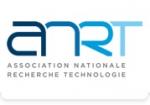 ANRT
ANRT  ONERA - The French Aerospace Lab
ONERA - The French Aerospace Lab  CASDEN
CASDEN  TotalEnergies
TotalEnergies  Institut Sup'biotech de Paris
Institut Sup'biotech de Paris  MabDesign
MabDesign  SUEZ
SUEZ  Généthon
Généthon  Ifremer
Ifremer 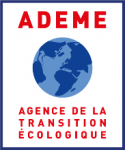 ADEME
ADEME  Aérocentre, Pôle d'excellence régional
Aérocentre, Pôle d'excellence régional  CESI
CESI


